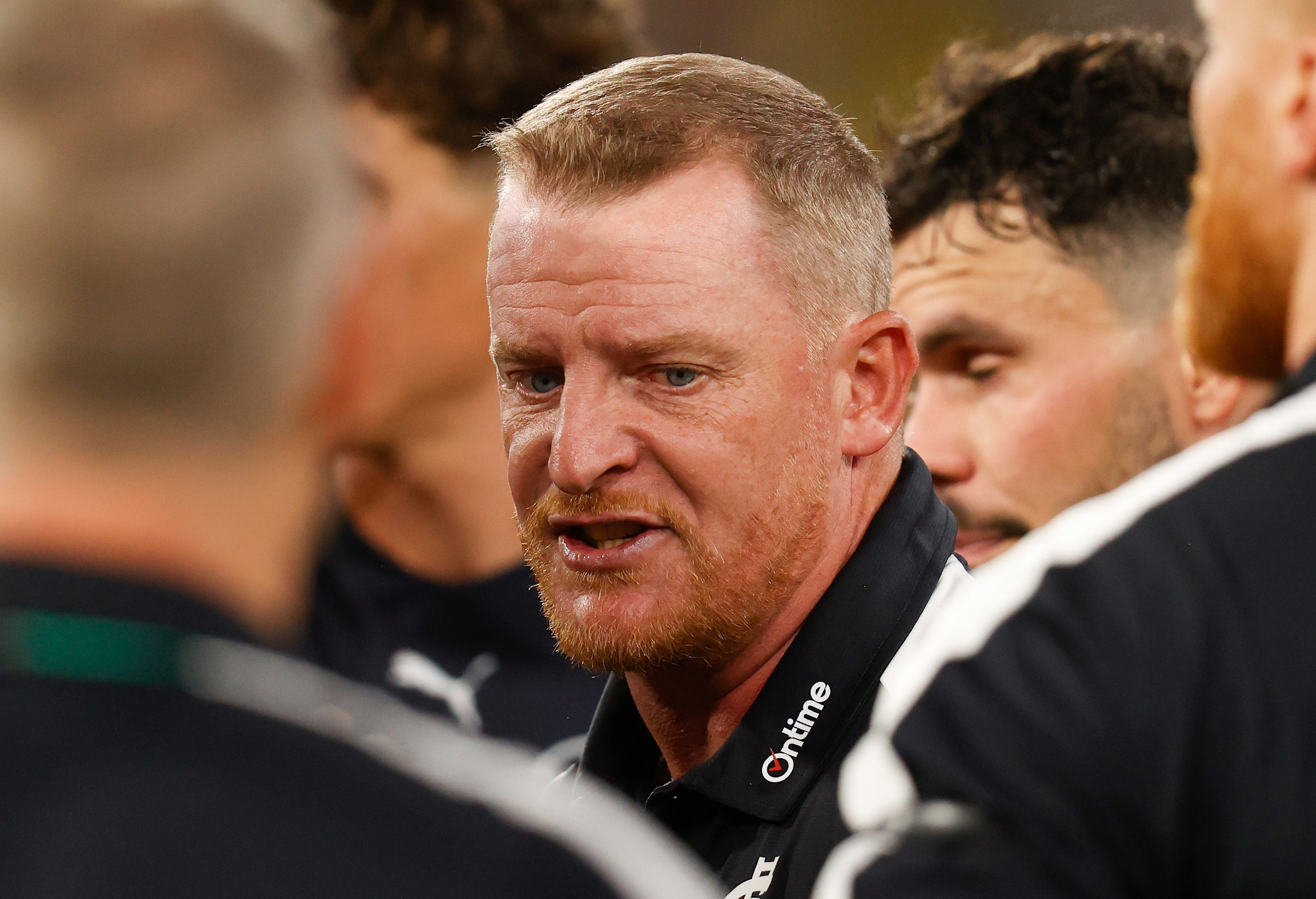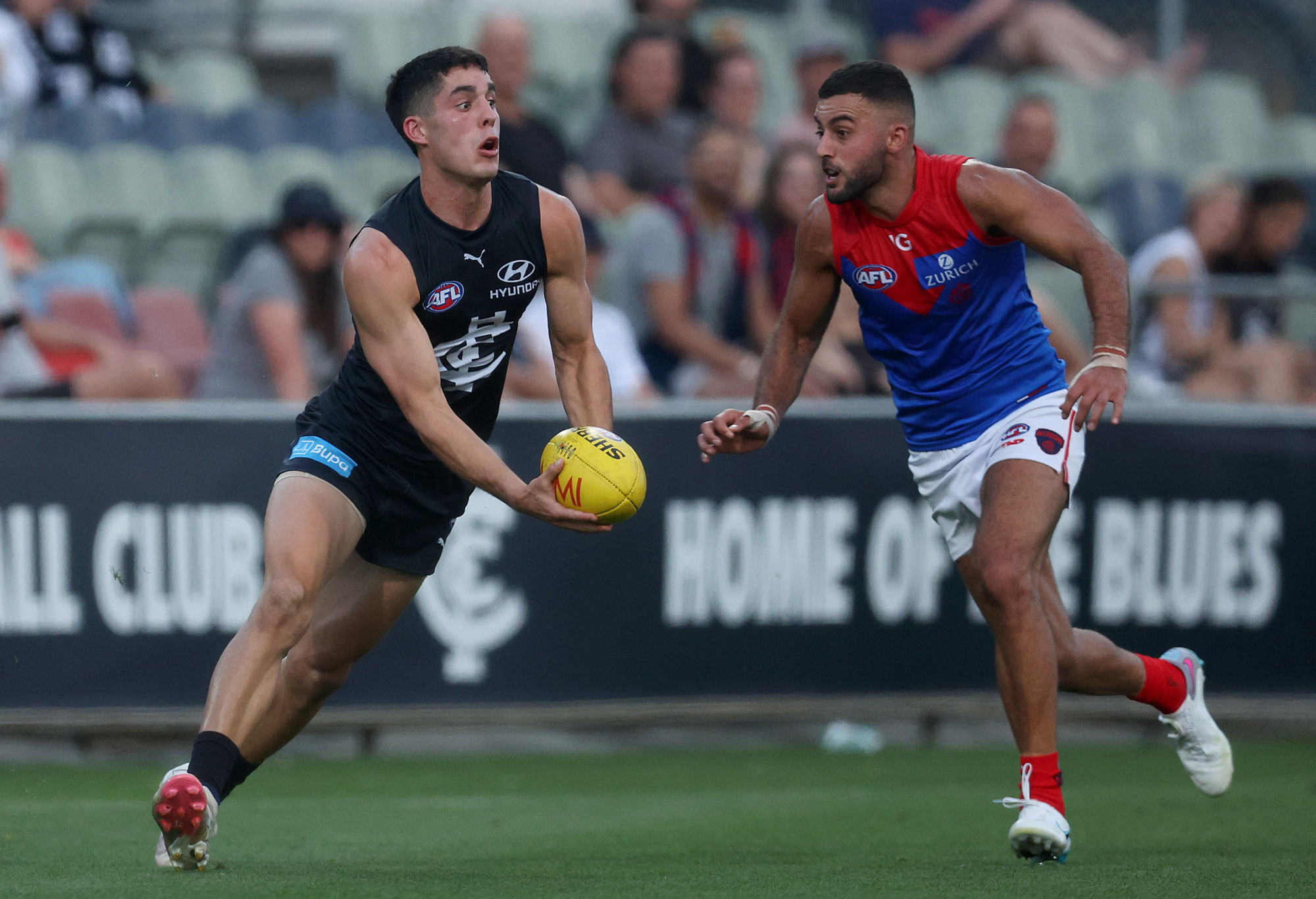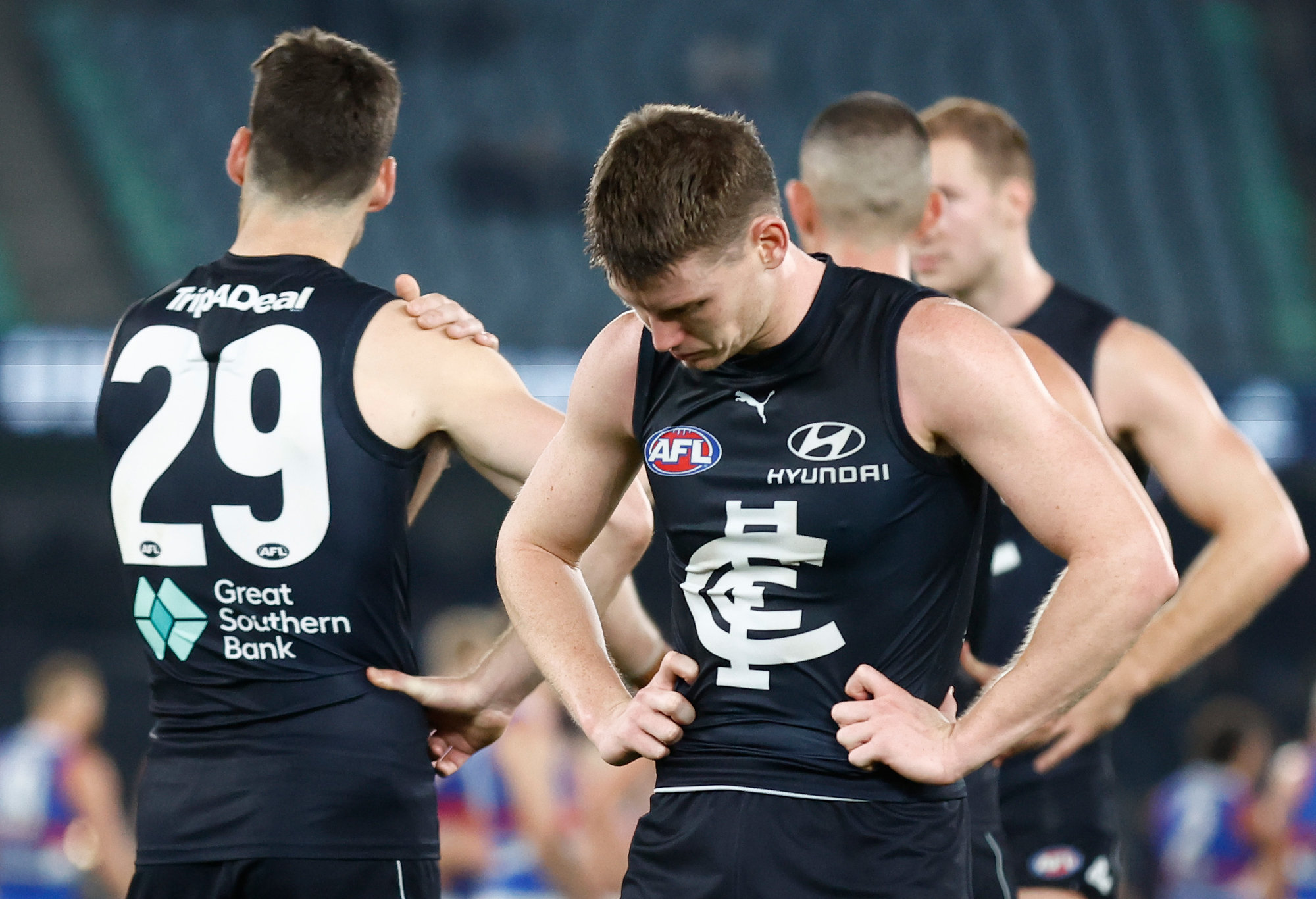Expert

The Blues have doubled down on their existing squad to break the near three-decade premiership drought rather than seek improvement by being bold.
Given the evenness in the competition, it’s hard to argue fully against the sentiment – they have the quality to do damage, although the coaching has always seemed to be tactically capped.
Last week we celebrated Collingwood going all in to try to win another premiership and commended the bravery. Carlton’s gone in a different direction.
Nick Haynes has joined the club, which is a handy addition.
Sure, the veteran isn’t what he once was – at his peak, he was one of the league’s best intercept defenders and a strong one-on-one player who helped anchor the Giants’ defence.
On the surface level, it would have appeared clear that another key defender to support Jacob Weitering was of great importance, but more aerial help is a way to bridge that defensive gap somewhat.
Haynes won’t play every game necessarily but good luck outmarking him and Mitch McGovern.
Of course, there’s the rumoured interest in Hawthorn’s former high draft pick Denver Grainger-Barras in what would be a shrewd move of a play with still, high potential, but that would hardly have an immediate effect.
So getting Haynes for free, tick – and then, that’s about it.
It’s not a bad thing the Blues didn’t do a whole lot else. They spent their energy and draft capital to get all the way up to pick 3 in this year’s epic draft class, which is great for a team that needs some more young quality coming through.
Clearly though, they’ve prioritised a singular young talent rather than doing what the Magpies did and going all in on a player in their prime.
The chance was there to really push hard for Dan Houston, even if the player’s club preference was swaying around all over the place.
He would’ve looked great in the navy blue and been of considerable assistance with his direct ball use.
The tantalising idea of getting just a small handful of centre bounce attendances for the shifty footwork of Adam Saad in rotation with Houston too, there may have been something to unlock there.

Carlton coach Michael Voss. (Photo by Michael Willson/AFL Photos via Getty Images)
Particularly with Carlton having been bang on league average for inside 50s and metres gained. This is a team that has the talent to dominate, yet has a style that is often uninspiring and rigid.
Recruiting Houston would’ve been bold and brave and pushed all the chips in.
They’d maintain their current strengths in stoppages and contested possession and for a team that ranked in the top four this season for scoring shots per inside 50, getting the ball in there more and creating plenty from the defensive half would’ve added another string to their bow.
It’s a clear deficiency, and one that’ll now seemingly be maintained.
But they didn’t go for Houston, they went for pick 3.
Then, they made the deals to part with their future first and second-round picks, to then help bundle their existing draft hand up to trade to West Coast – and seemingly not even ask the Barrass question.
Again, it’s another bold move to try to hijack the Hawthorn deal for an established player, but if the opportunity was there to go for Barrass before pick 3, solidifying that defensive structure had to have been the priority.
It’s not that Michael Voss is a tactically bad coach, but there are a lot of occasions where Carlton plays one way and one way only.
It leaves them vulnerable defensively at times, particularly with the sole reliance on Weitering.
There’s nothing inherently wrong with the way the Blues defend, but there’s nothing good about it either. It’s just…average.
They’re around league average for conceding shots per inside 50, for scores against, and for the number of marks they allow to the opposition when they get into attack.
Carlton defends the transition pretty poorly. Yes, they concede from stoppages at a high rate, but that’s because they play a stoppage-dependent game that they back themselves to win.
What that inevitably means though is that at times, they can win the stoppage but as soon as they turn it over, the opposition moves the ball well and directly and can get over the top of Carlton’s defence.
Relying on having a bunch of elite intercept markers is a great plan when you have enough numbers back and are forcing the opposition into kicking high and long.

Adam Cerra handballs under pressure from Christian Salem. (Photo by Daniel Pockett/Getty Images)
If the Blues are backing themselves at stoppages and banking on winning the ball, sometimes, that bet doesn’t pay off and the intercept game is nullified by being exposed to one-on-ones.
McGovern’s a good one-on-one defender, but he doesn’t participate in many of them.
Weitering aside, the rest of the defence is below average or simply avoid these contests. Barrass isn’t perfect, but having two elite readers of the play that cover the opposition would’ve been nice.
Now, that’s a lot of what Carlton didn’t do to improve, two targets that were right in front of them to at least go all out for, but two that didn’t and mightn’t have ever joined the club.
What has happened, is they’ve gone all in for pick 3. Now, whether they try and split it into two first-round picks this season remains to be seen over the next month or so, but for the time being, we’ll assume they’re holding onto it.
One area that the Blues also need improvement in is midfield versatility. Patrick Cripps is the star bulldozer and Sam Walsh is a mix of a tackling machine and endurance athlete.
Then there’s Adam Cerra whose body lets him down too often to rely on what is a naturally skilled player and George Hewett who’s a pure inside midfielder.
Elijah Hollands will keep rotating through and he’s supremely talented and skilled with class himself, Cooper Lord is tough and fit too.
They don’t have enough speed emerging from the contest, the sort of class that can play both parts of stoppages particularly well and produce an end product with consistency.
Naturally, the ideal target seems to be Finn O’Sullivan, probably the most well-rounded and highest-upside midfield talent in the draft.
He can play inside and outside, he’s good overhead, he can hit the scoreboard and while he doesn’t win a heap of the ball yet, his footy smarts make him a damaging prospect who can mould his game on Isaac Heeney if he wants. He’s also the cousin of Sam Walsh.
He mightn’t get to Carlton’s pick would be the only issue and if he doesn’t, it’s then a choice of other prodigiously talented midfielders.
Personally, Sid Draper would seem to be a perfect fit. The South Australian product might be the best prospect full stop.
His agility and speed as a starting inside midfielder have been on show all season at a high level. He’s the sort of player who can play early and play often and is a complete point of difference to what Carlton has.
Failing that, it might be worth splitting the picks with a Melbourne or Richmond if applicable, because the depth in the first round particularly is worth investing in.

Sam Walsh. (Photo by Michael Willson/AFL Photos via Getty Images)
Clearly though, more than defensive issues or improving transition play, Carlton has identified improving its midfield mix and offensive ball retention as its key hurdle to overcome in a bid for the 2025 flag.
It’s why they let Matt Kennedy go for a later pick, with the hope they can use these on the Camporeale twins, or at least match any bid that may come through if applicable.
The treatment of Kennedy though, a player who has given his all for the club, played in a multitude of unsuitable roles and done well, leaves a slight sour taste. Poorly handled, but it’s the Bulldogs’ gain.
For what the Blues want to achieve, the departure of Matt Owies is not much of a loss at all. Sure, he’s a great goalkicker and should help sharpen up West Coast’s offence, but Carlton needs defensive pressure and high work rate from its smalls and high half-forwards, which weren’t his strengths.
Voss has always had a talented squad to work with and at their best, Carlton can play scintillating and damaging footy that is almost unstoppable. We saw that at times in 2024.
But we’ve discussed the lack of plan B many times and the distinct absence of tactical versatility to counteract momentum shifts. It happens too often at the Blues and only sometimes can they halt the play of the opposition.
It’s either contested ball-winning footy and sending it to the big boys up front or trying to slow it down with ball retention in the back half.
After the 2024 trade period, it’s clear that Carlton wants to have a foot in both camps. Compete for the flag this year with largely the same squad, and have an elite young talent coming through the ranks who can hopefully contribute immediately.
Yes, it’s wonderful the Blues will have one of the top prospects in this draft class joining the club by the end of November and the quality is there to help improve the midfield, but the Blues had problems that needed addressing and they chose to go the unique route of targeting the draft.
For Carlton to win the 2025 flag, other than obviously desperately hoping for a good injury run, it’s clear that they need the head coach to come up with some fresh plans and new tactics to extract the most out of his group, because relying on a kid to fix things is a recipe for disaster.